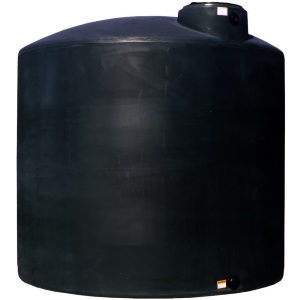I'm thinking about getting a water tank and putting it in the garage. That is, a big one...maybe 750 gallons.
I have one now, but it is a thin skin plastic 50 gallon barrel like the one below.

Anyone have any experience with large tanks? I live in the suburbs, so I don't want to draw too much attention. I'm thinking about putting one under my deck. Or, maybe one like the linked 750 gallon, Tri-Layer Water Tank in the back corner of my garage.

Anyone have any experience with these types of tanks?
"Tri-Layer" sounds better than single layer...although being able to see the water level ("viewing through the manway") seems to undo some of that implied strength.
The "anti-bacterial coated internal layer" also sounds good. Not sure how long that would last.
Or, maybe I should get a more ordinary tank? Or a steel one?
I've been saving for a tank for quite some time, so I can pull the trigger on a three-figure (multi-hundred gallon) tank like this. But, four-figure (multi-thousand gallon tanks) are still out of my reach right now.
Water is my achilles heel right now. Once I get bigger tank, I will feel much better about storage (while still thinking about fresh water sources as opposed to mere storage).
I have one now, but it is a thin skin plastic 50 gallon barrel like the one below.

Anyone have any experience with large tanks? I live in the suburbs, so I don't want to draw too much attention. I'm thinking about putting one under my deck. Or, maybe one like the linked 750 gallon, Tri-Layer Water Tank in the back corner of my garage.

Anyone have any experience with these types of tanks?
"Tri-Layer" sounds better than single layer...although being able to see the water level ("viewing through the manway") seems to undo some of that implied strength.
The "anti-bacterial coated internal layer" also sounds good. Not sure how long that would last.
Or, maybe I should get a more ordinary tank? Or a steel one?
I've been saving for a tank for quite some time, so I can pull the trigger on a three-figure (multi-hundred gallon) tank like this. But, four-figure (multi-thousand gallon tanks) are still out of my reach right now.
Water is my achilles heel right now. Once I get bigger tank, I will feel much better about storage (while still thinking about fresh water sources as opposed to mere storage).
Last edited:






